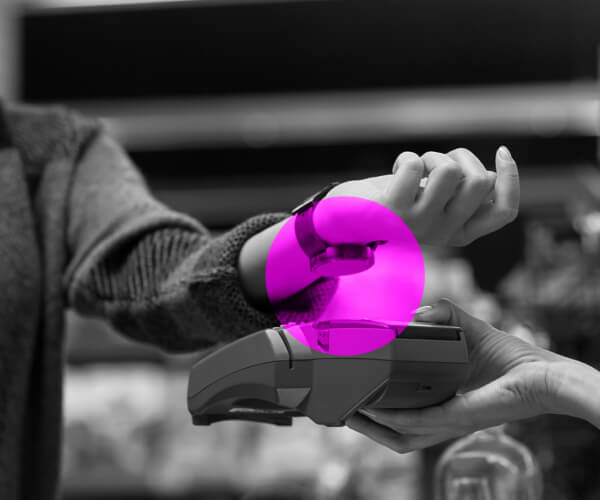With the transformation of the shopper landscape and rise of omnichannel, something also emerging across categories is the rise of challenger brands. So, what are challenger brands and what can we learn from their recent success?
A challenger brand is largely defined as a company/brand that it is neither the market leader nor a niche brand, but one that sets itself apart with an entrepreneurial mindset and business ambitions that intend to disrupt the existing categories in which it seeks to play. From what we are seeing, many challenger brands are effectively competing with and stealing share from the market leaders, introducing a very real threat for incumbent brands.
To better understand the concept of challenger brands and their success, you only need to look at examples such as Quip, Dollar Shave Club and Glossier which have each disrupted the categories they entered and are challenging the status quo.
Quip , for example, challenges the electric toothbrush market with its product known by some as “The Tesla of Toothbrushes.” It combines an Apple-style approach to electric toothbrush design (simple and sleek), with a Dollar Shave Club style subscription model for refills of batteries, brush heads and associated oral care products. Quip has cemented its place in the industry by consistently making it onto “best toothbrush” lists and review sites and now boasts to be servicing over 5 million mouths and counting. While oral care is considered necessary by consumers, brushing teeth, flossing, and visiting the dentist are not activities that people necessarily enjoy. Quip is challenging that reluctance with a sleek, simple, and effective alternative to regular electric toothbrushes, and it is already achieved that success. An outstanding digital strategy has delivered promising results for Quip, with getquip.com reaching second place for number of visits to electric toothbrush web pages, second only to global giant Philips.
, for example, challenges the electric toothbrush market with its product known by some as “The Tesla of Toothbrushes.” It combines an Apple-style approach to electric toothbrush design (simple and sleek), with a Dollar Shave Club style subscription model for refills of batteries, brush heads and associated oral care products. Quip has cemented its place in the industry by consistently making it onto “best toothbrush” lists and review sites and now boasts to be servicing over 5 million mouths and counting. While oral care is considered necessary by consumers, brushing teeth, flossing, and visiting the dentist are not activities that people necessarily enjoy. Quip is challenging that reluctance with a sleek, simple, and effective alternative to regular electric toothbrushes, and it is already achieved that success. An outstanding digital strategy has delivered promising results for Quip, with getquip.com reaching second place for number of visits to electric toothbrush web pages, second only to global giant Philips.
In all industries, brands need to be aware as disruption can and is happening.
So how are challenger brands succeeding and what can we learn from them?
Firstly, challenger brands typically possess an outstanding digital strategy, often direct-to-consumer.
All brands today compete in a highly fragmented media landscape and in the disruptive nature of DTC digital commerce channels. With consumers now scattered across so many different touchpoints, social media has become much more powerful to reach consumers than the more traditional TV advertisements that held the influential spots in days gone by. It is no wonder social media is now used by brands as a point of leverage. In some cases, DTC brands’ success and cultural relevance in market begins with content marketing that tells the brand’s story in an authentic manner and is amplified through social media.
Secondly, challenger brands also often prioritize DTC and e-commerce channels to build up their consumer base before traditional brick & mortar.
E-commerce allows for a more level playing field across brands, removing the challenge they would face with a small footprint against a dominant competitive brand block at shelf, as often would be the case for challenger brands going straight to brick-and-mortar channels.
DTC also allows the brand to hold greater control of the overall consumer experience, precise targeting, and personal engagement with their consumers.
Lastly, having nimble organizations with an owner mindset help challenger brands to succeed. Having an optimistic outlook to battle through setbacks, curiosity to drive constant improvement and the passion to bring an authentic solution to consumers.
Years ago, who would have thought we’d be jumping in Ubers, staying in AirBnBs or receiving our toothbrushes through the mail as so many of us do? But what once seemed so different has quickly normalized. After the COVID pandemic, shoppers today seem more open and used to change than ever before. I am excited to see how the next generation of challenger brands will shape and evolve the future shopper landscape.
 THE AUTHOR
THE AUTHOR
Francesca D’Souza is a Vice President, Client Development, at Behaviorally (formerly PRS) and an experienced researcher with a passion for understanding human behavior. Through extensive international experience working in the UK, China and the US, Francesca has a wealth of knowledge across shopper touch points, including packaging, shopper, e-commerce, product and forecasting. Francesca is also a language enthusiast who loves to travel and learn about new countries and cultures. Connect with Francesca on LinkedIn here.
